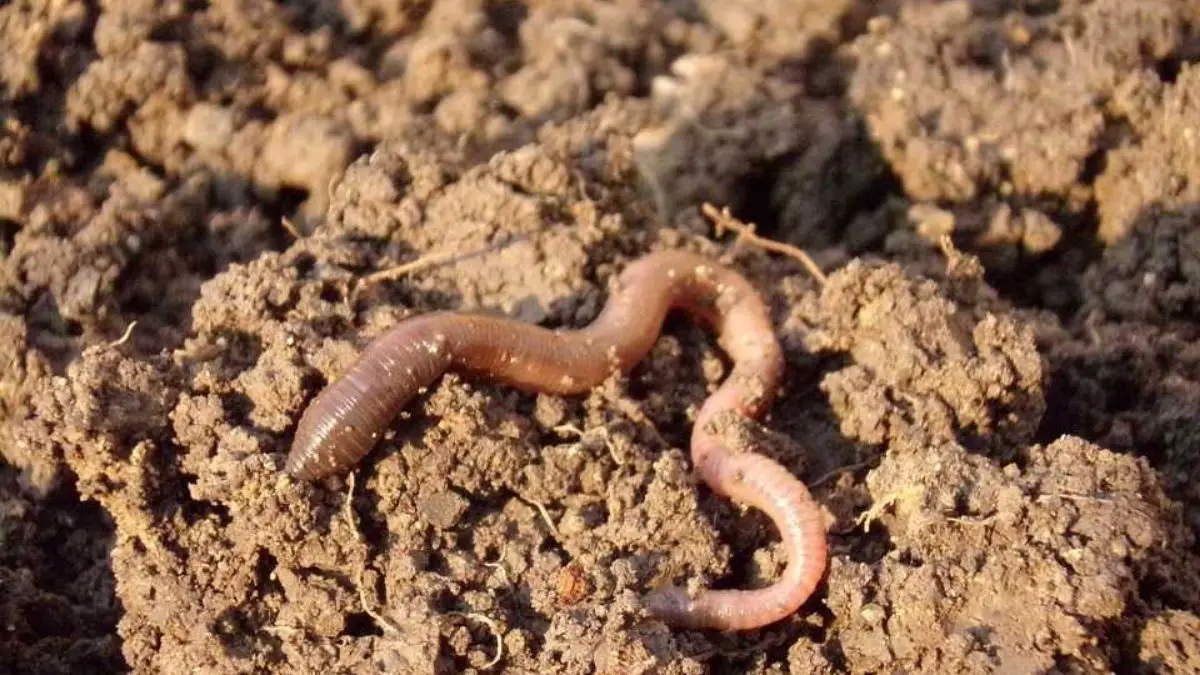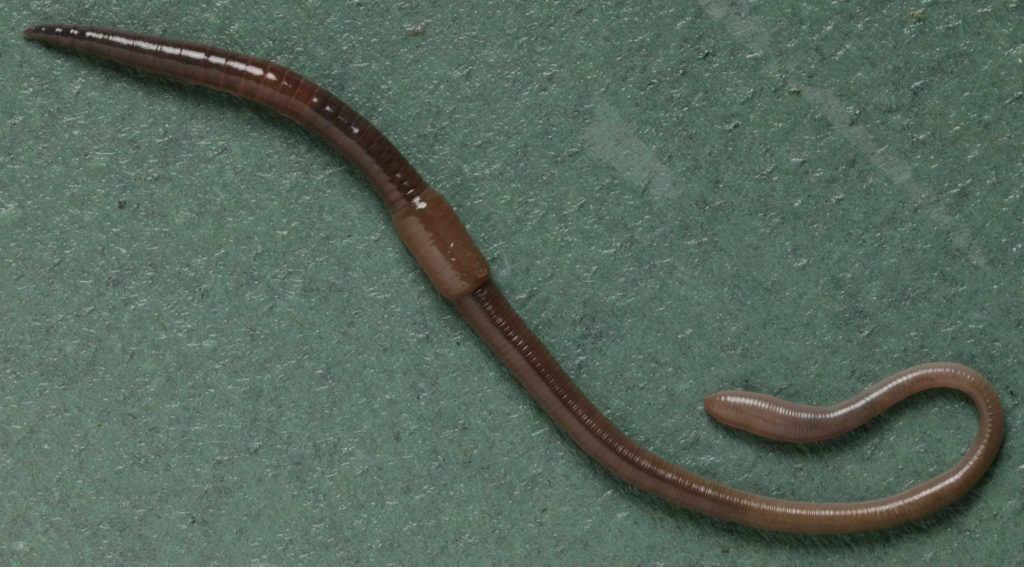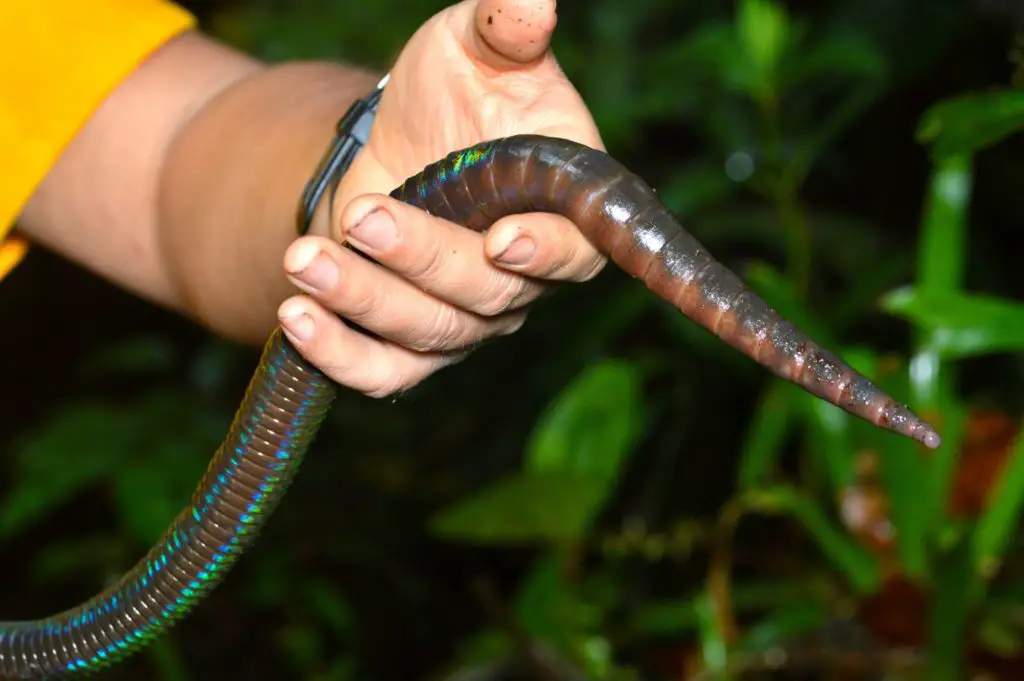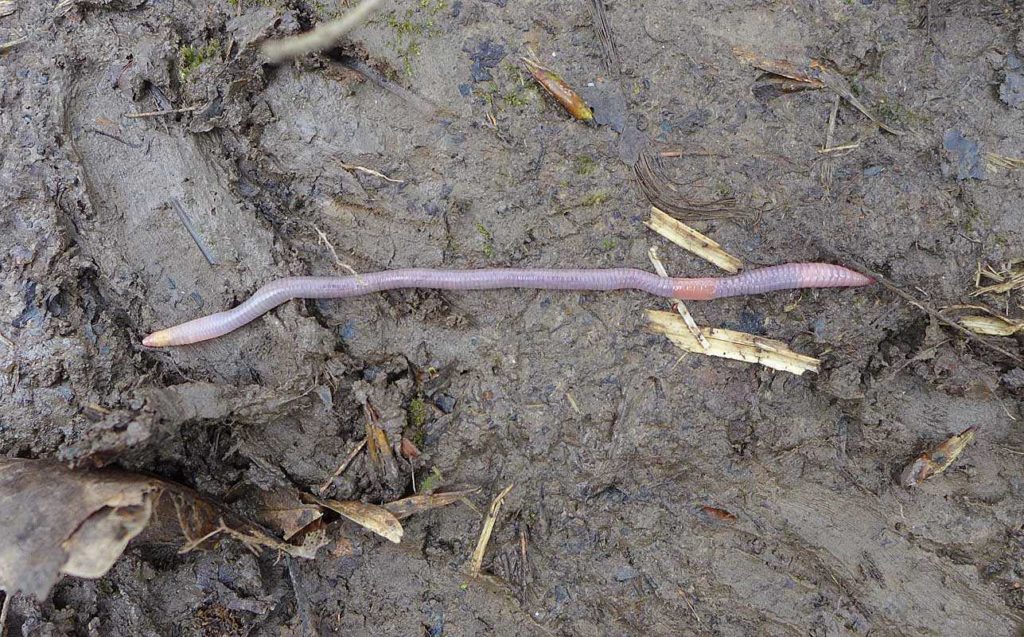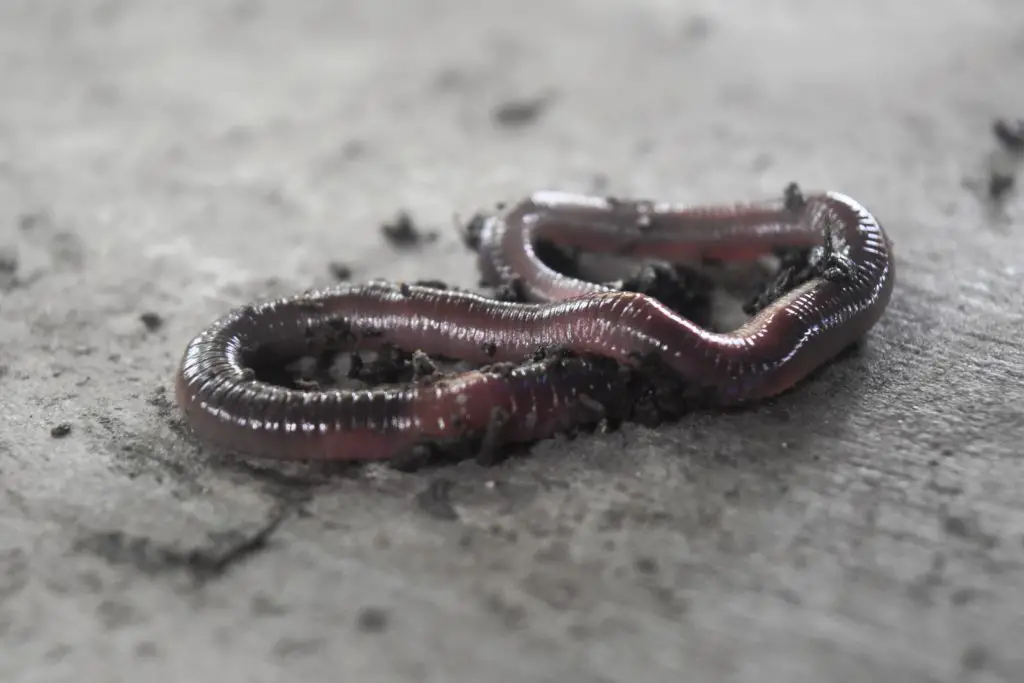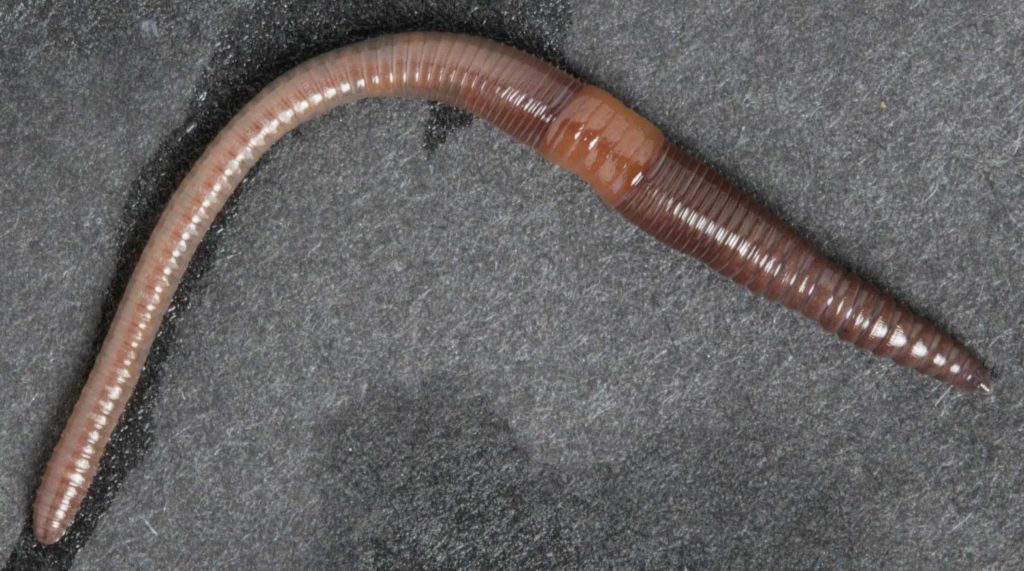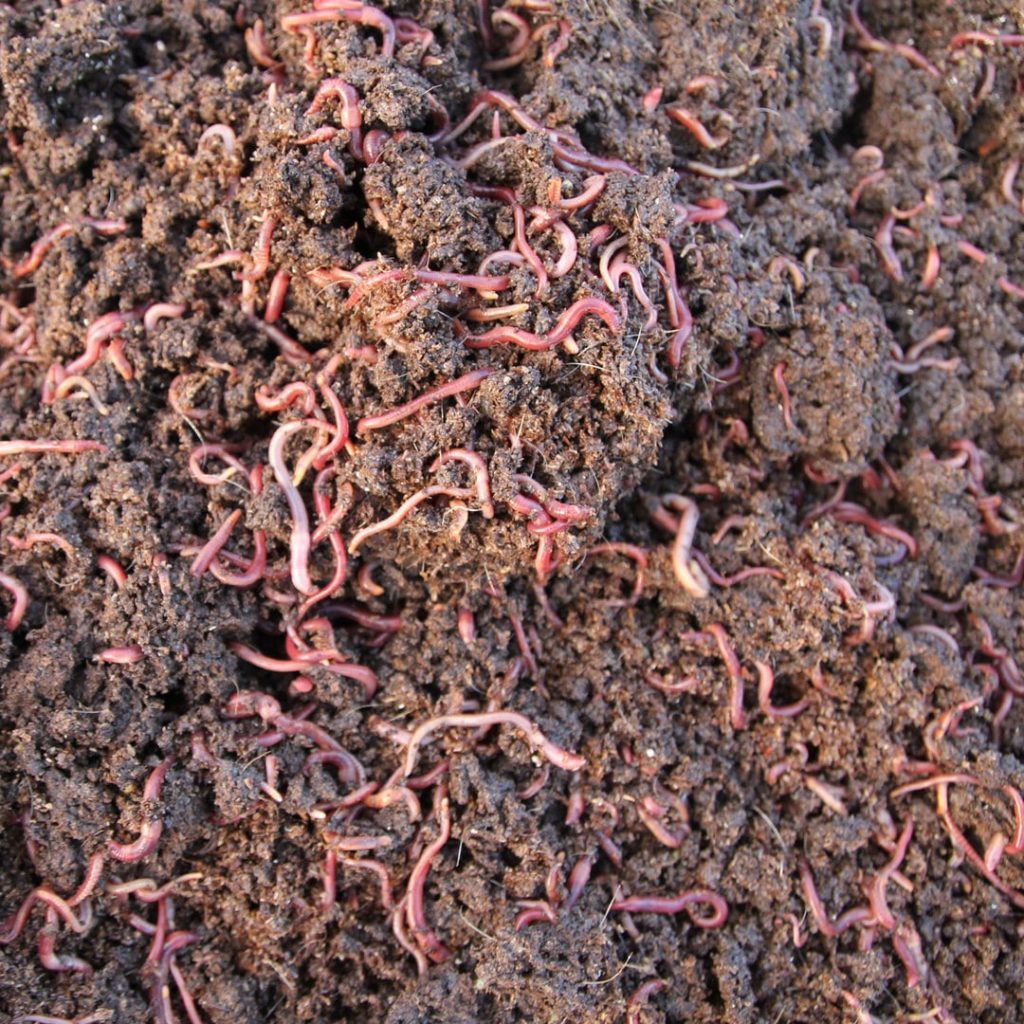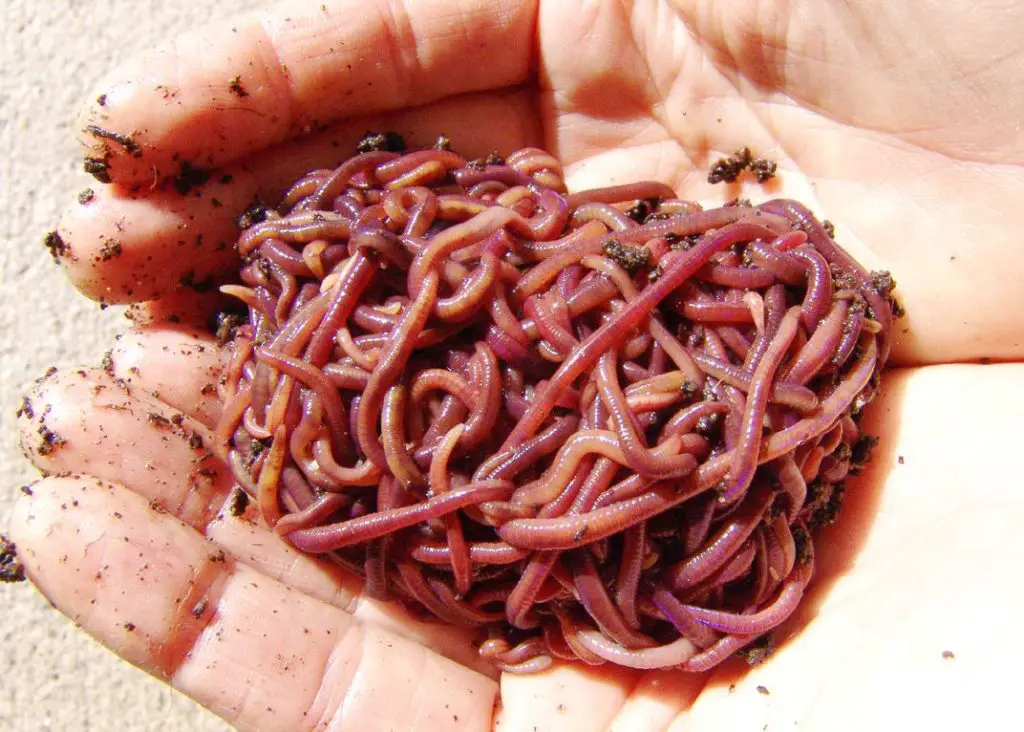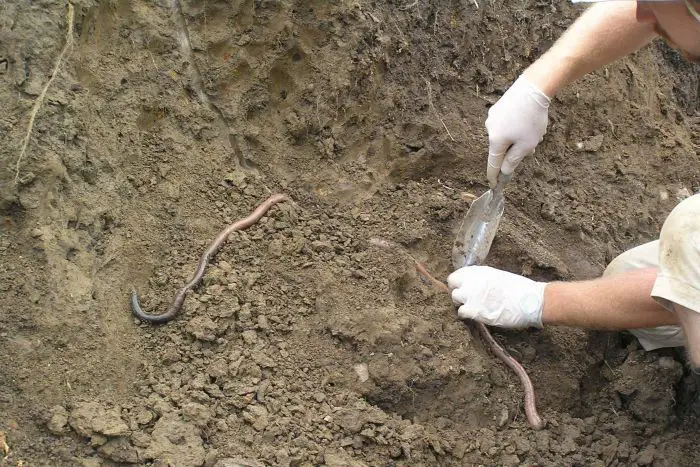There are 3 main types of earthworms; the compost worm, the earth-worker worm, and the root-dwelling worm. Pheretima, Perionyx excavatus, Glossoscolecidae, Acanthodrilidae, and Eudrilidae are also species of earthworms that you may not know of just by looking at their name. They are all considered lower classifications of earthworms.
Contents
What Is An Earthworm?
An earthworm is a tube-shaped, segmented worm. Earthworms can be found all over the world living in the soil.
They feed on live and dead organic matter. An earthworm’s digestive system runs through the length of its body and it breathes through its skin.
List of Earthworm Types
Pheretima
These types of earthworms are found mainly in New Guinea. Like most earthworms, pheretima are nocturnal and abhor light. They feed and only at night. And, like most earthworms, they must keep their body surface wet to breathe.
Anecic Earthworms
This species of earthworm leaves permanent vertical burrows in the soil. They drag leaves from the surface into these burrows and eat the leaves.
Anecic earthworms a dark red or brown head end while their tails are usually a paler color.
Anecic earthworms also leave piles of dirt and debris behind when as they burrow by casting them around the entrance to form a mound.
They also cast their waste on the surface as well which in turn acts as fertilizer for plants. Earthworms in this species include the Aporrectodea longa (pictured above), Aporrectodea nocturna, Lumbricus friendi and Lumbricus terrestris.
Glossoscolecidae
Glossoscolecidae make up a species of earthworms that are native to Central and South America. They typically inhabit forested areas. They can grow up to 6 feet long.
Endogeic Earthworms
Endogeic earthworms live in and feed on the soil. Unlike anecic earthworms, which make vertical burrows, these types of earthworms make horizontal burrows through the soil as they move around. Endogeic earthworms are often pale in color. Most have a mixture of grey, pale pink, green or blue.
Allolobophora Chlorotica
Allolobophora chlorotica is also known as the green worm. These earthworms feed and live in the soil. Green worms differ from other earthworms due to the presence of three ‘Sucker-like Discs’ on the underside of the clitellum.
Octolasion Cyaneum
These species of earthworm lives mainly in topsoil. It feeds on the soil where it lives. Most Octolasion Cyaneum grow to 10cm once they reach maturity. The body from the first segment to the saddle is partly or entirely pale in color.
The color of these types of earthworms varies and they can be faint blue-grey to a pale rosy pink color. However, it has prominent yellowtail (last four or five segments). Octolasion cyaneum may also have a lilac-blue line on the upper surface.
Eudrilidae
The Eudrilidae are a family of earthworms found mostly in Africa. Although, one species, Eudrilus eugeniae, is widely distributed around the warmer parts of the world and historically cultured as the “African nightcrawler”.
Epigeic Earthworms
These types of earthworms live on the surface of the soil in leaf scatterings. Unlike the other kinds of earthworms, epigeic earthworms are not likely to make burrows but live in and feed on the leaf litter on the surface. Most are often bright red or reddy-brown in color and they are not usually stripy.
Dendrobaena Octaedra
These are small (2-4 cm), litter-dwelling earthworm native to Europe. However, they can also be found in parts of Canada, the United States, South America, and Asia.
Dendrobaena octaedra feed principally on microorganisms associated with rotting surface litter. They are also known as the octagonal tail-worm.
Acanthodrilidae
The Acanthodrilidae are an ancient and widely distributed type of earthworm that can be found in Australia, New Zealand, South Africa, South America, and North America.

Eiseniella Tetraedra
The eiseniella tetredra is a red worm that varies in length from 2 to 8 cm. These species are aquatic and live in mud or under stones in rivers. You’d also find them in damp areas on land.
Compost Worms
There are 4 types of compost worms and they live within the top four to five inches of topsoil and feed on vegetable matter. They prefer to eat of protozoa, bacteria, and fungi.
You can find these types of earthworms in regular garden soil, leaf piles, and manure piles. Compost worms don’t build permanent burrows but, instead, they burrow randomly throughout the rotting matter and the topsoil.
Perionyx Excavatus
Perionyx excavatus is are a variety of compost worms grown commercially. Popular names for this species include blues or Indian blues.
Earthworker Worms
These are the most common earthworm types that you’d find in your garden. They make long vertical burrows that are a few feet deep, leaving their poo, known as worm casts at the entrances.
Earthworker worms do eat large volumes of organic matter (leaves) but prefer to munch on soil instead. They mainly come out at night to look for food.
Root-Dwelling Worms
There are two extremely rare earthworms; the didymogaster sylvaticus (the squirting worm) and the Australian megascolides australis. You won’t ever happen upon any of these root-dwelling worms as they never come up to the surface.
The didymogaster sylvaticus can squirt its slime over 30cm while the megascolides australis can squirt slime up to 10cm. The megascolides australis can grow up to 12 feet long and they use their slime to lube their tunnels to protect their sensitive skin.
References
- Earthworm Types | About Worms | Worm Composting | Guide | Omlet
- Worm Facts | The Adventures of Herman the Worm | U of I Extension
- How earthworms can help your soil – GOV.au
- Earthworms and Vermicomposting | IntechOpen
- Earthworm ecology | Earthworm Society of Britain
- Earthworm Identification Guide – Opal (PDF)
- “Meet the squirting earthworm” (video). Youtube.
- Earthworm – Wikipedia
- What are Worm Castings? – Gardening Know How
- Black-headed Worm – Aporrectodea longa – Nature Spot
- Capowiez, Y. Differences in burrowing behaviour and spatial interaction between the two earthworm species Aporrectodea nocturna and Allolobophora chlorotica. Biol Fertil Soils 30, 341–346 (2000) doi:10.1007/s003740050013
- Allolobophora chlorotica – Wikipedia
- NatureSpot: Green Worm – Allolobophora chlorotica
- “Going on a worm hunt: Allolobophora chlorotica the green earthworm”
- Invasion of the earthworms, mapped and analyzed – Eureka Alert
- Aquatic Invertebrates of Montana – Eiseniella tetraedra – Montana Etymology Collection
- Squirter earthworm at Bega River Bioblitz – Atlas of Life
- Giant Gippsland earthworms get council protections to preserve precious habitat – ABC AU
- Earthworm-Pheretima posthuma | Zoology for IAS
- Earthworms – Penn Arts and Sciences
- Edwards, C., Dominguez, J. & Neuhauser, E. Growth and reproduction of Perionyx excavatus (Perr.) (Megascolecidae) as factors in organic waste management. Biol Fertil Soils 27, 155–161 (1998) doi:10.1007/s003740050414
- The suitability of Eudrilus eugeniae, perionyx excavatus and Eisenia fetida (Oligochaeta) for vermicomposting in southern africa in terms of their temperature requirements – Sciencing Direct
- A handful of compost worms; perionyx excavatus. – Smithsonian
- Family Glossoscolecidae – iNaturalist
- Family Acanthodrilidae – iNaturalist
- Beddard, F. 1891. On the structure of two genera of earthworms belonging to the Eudrilidae, and some remarks on Nemertodrilus. Quarterly Journal of Microscopical Sciences, 32: 235–278.
